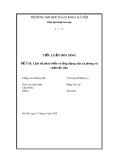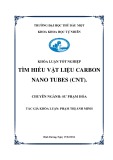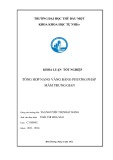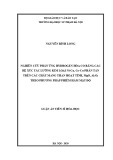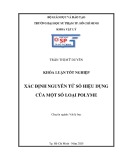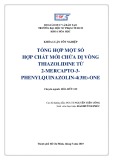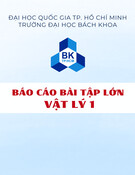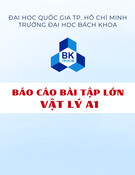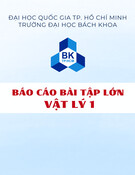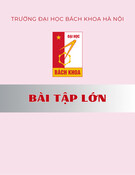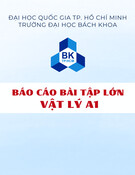
1
INTRODUCTION
With the increasing population and economic boom, the demand
for energy escalates everyday. However, the major source of energy,
fossil fuel, is depleting and its price is projected to rise. Therefore,
finding clean, renewable and e nvironmentally friendly energy
sources is an urgent and practical issue of the entire world, not just
any country.
One of those clean and limitless energy sources is solar energy.
The question is how can we convert this massive source into other
types of energy that can be stored, distributed and utilized on
demand. Besides solar cell, another method is to store solar energy in
the bond of H2 molecules through photoelectrochemical (PEC) cells,
also known as artificial leaf. This process is similar to the
photosynthesis in nature: using sunlight to split water into H2 và O2.
The photoelectrochemical cell has the cathode made of p-type
semiconductor and the anode made of n-type semiconductor.
Among p-type semiconductor cathodes, Cu2O has been
researched extensively. Since Cu2O has a small band gap in the range
of 1.9 – 2.2 eV, it is efficient in absorbing visible light. The
maximum theoretical solar-to-hydrogen conversion efficiency of
Cu2O is approximately 18%. Moreover, Cu2O is neither expensive
nor toxic, and can be easily synthesized from abundant natural
compounds. Nonetheless, one major drawback of Cu2O, which limits
its usage in water splitting, is its susceptibility to photo-corrosion.
The standard redox potentials of the Cu2O/Cu and CuO/Cu2O
couples lie within Cu2O's band gap so the preferred thermodynamic
process of photogenerated electrons and holes are reducing Cu+ into









